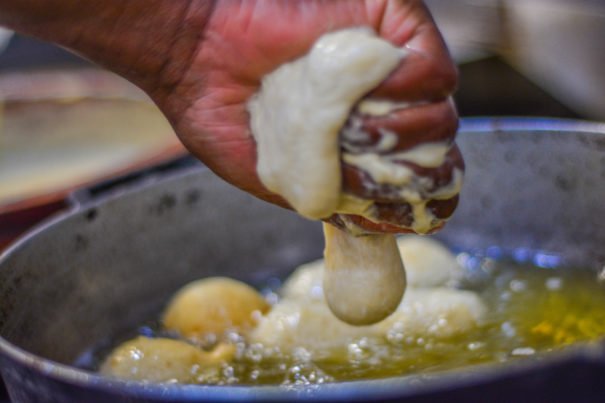
If You’re in Mexico City and Craving Cameroonian Bread, You’re In Luck

If You’re in Mexico City and Craving Cameroonian Bread, You’re In Luck
Makra in Mexico City
I live in Mexico City, perhaps not the most obvious location for a place devoted to African gastronomy. But there is a small and cozy restaurant in the north part of this megalopolis called Lafricaine, and it is where I ate one of the most magnificent pieces of bread: the makra.
I don’t make this affirmation lightly. Mexico has no shortage of baked goods. Every day, we can choose between the bolillo (and their many varieties: torta, guajolota, or molletes, for instance), a concha (with nata or with a cup of hot chocolate), an oreja (so called because it resembles an elephant’s ear) and many other breads at our panaderías.
Makra is just a ball of fried banana bread. But its simplicity is what makes it so attractive. As is often the case, the simpler the dish, the better it tastes. I thought, when I first tasted it, that this could be the next big thing, if only more Mexicans knew about it.
Danielle, Lafricaine’s owner, told me her family ate makra for breakfast every morning. I imagined her family feeling the first rays of the sun in Bafang, Cameroon, while they ate and prepared themselves for another day, which always began with a bunch of freshly fried makras. Usually, they ate this bread with beans and buyi, a fermented drink made of cornmeal. In Mexico, however, I ate it with cajeta, a Mexican staple of sweetened caramelized goat’s milk.
After they immigrated to Mexico, Danielle’s family left many things behind, but not their makra morning ritual. Maybe because the recipe is simple and the bread can be easily reproduced with products in any Mexican market, or maybe because some foods feel like home more than any house or bed. Either way, I found myself transported through the flavors of a long lost home.